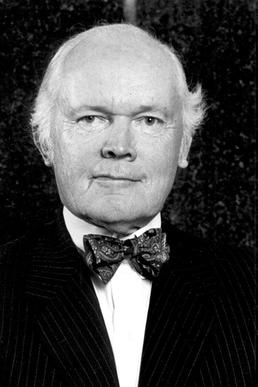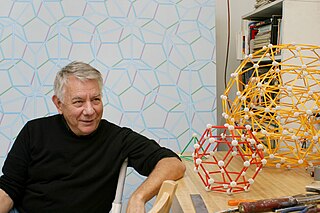Related Research Articles
Herbert Bayer was an Austrian and American graphic designer, painter, photographer, sculptor, art director, environmental and interior designer, and architect. He was instrumental in the development of the Atlantic Richfield Company's corporate art collection until his death in 1985.
Smurfit-Stone Container Corporation was a global paperboard and paper-based packaging company based in Creve Coeur, Missouri, and Chicago, Illinois, with approximately 21,000 employees. In 2007, Smurfit-Stone was ranked 13 in PricewaterhouseCoopers' "Top 100" forest, paper, and packaging companies in the world as ranked by sales revenue. The company was also among the world's largest paper recyclers.

A carton is a box or container usually made of liquid packaging board, paperboard and sometimes of corrugated fiberboard. Many types of cartons are used in packaging. Sometimes a carton is also called a box.

Coca-Cola Amatil Limited (CCAL) was an Australian bottler of non-alcoholic beverages that existed from 1904 to 2021, when it merged with Coca-Cola European Partners to form Coca-Cola Europacific Partners. It was one of the largest bottlers of non-alcoholic ready-to-drink beverages in the Asia-Pacific region and one of the world's five major Coca-Cola bottlers. CCA operated in six countries—Australia, New Zealand, Indonesia, Papua New Guinea, Fiji and Samoa. The company also bottled beer and coffee.

The California College of the Arts (CCA) is a private art school in San Francisco, California. It was founded in Berkeley, California in 1907 and moved to a historic estate in Oakland, California in 1922. In 1996, it opened a second campus in San Francisco; in 2022, the Oakland campus was closed and merged into the San Francisco campus. CCA enrolls approximately 1,239 undergraduates and 380 graduate students.

The universal recycling symbol is a symbol consisting of three chasing arrows folded in a Möbius strip. It is an internationally recognized symbol for recycling. The symbol originated on the first Earth Day in 1970, created by Gary Anderson, then a 23-year-old student for the Container Corporation of America. The symbol is not trademarked and is in the public domain. Many variations on the logo have been created since its creation.
The Aspen Institute is an international nonprofit organization founded in 1949 as the Aspen Institute for Humanistic Studies. The institute is headquartered in Washington, D.C. It also has campuses in Aspen, Colorado, its original home.
Walter Paepcke was an American businessman and philanthropist who was prominent in the mid-20th century. A longtime executive of the Chicago-based Container Corporation of America, Paepcke is best noted for his founding of the Aspen Institute and the Aspen Skiing Company in the early 1950s, both of which helped transform the town of Aspen, Colorado into an international resort destination and popularize the sport of skiing in the United States.
Masonite International Corporation is a designer, manufacturer and distributor of interior and exterior doors for the new construction and repair, renovation and remodeling sectors of the residential and non-residential building construction markets.
Smurfit Kappa Group plc is a corrugated packaging company and paper-based packaging company based in Dublin, Ireland. It is listed on the London Stock Exchange and is a constituent of the FTSE 100 Index.
WestRock is an American corrugated packaging company. It was formed in July 2015 after the merger of MeadWestvaco and RockTenn. WestRock is the 2nd largest American packaging company. It is one of the world's largest paper and packaging companies with US$21.3 billion in annual revenue and more than 50,000 team members in more than 300 locations in 30 countries around the world. The company is headquartered in Sandy Springs, Georgia, consolidating offices from Norcross, Georgia and Richmond, Virginia.

Robert Orville Anderson was an American businessman, art collector, and philanthropist who founded Atlantic Richfield Company (ARCO). Anderson also supported several cultural organizations, from the Los Angeles County Museum of Art to Harper's Magazine. He died December 2, 2007, at his home in Roswell, New Mexico.

Gary Dean Anderson is an American graphic designer and architect. He is best known as the designer of the recycling symbol, one of the most readily recognizable logos in the world.
Tomoko Miho was a Japanese-American graphic designer and recipient of the 1993 AIGA Medal. She is known for her understanding of the relationship between space and object.

Charles Toucey Coiner was an American painter and advertising art director.
Laylah Ali (born 1968) is a contemporary visual artist known for paintings in which ambiguous race relations are depicted with a graphic clarity and cartoon strip format.
Naomie Kremer is an Israeli born American artist living and working in Berkeley, CA, and Paris, France. Kremer works in paint, video, photography, digital projection, and stage design.
Lucille Tenazas is a graphic designer, educator, and the founder of Tenazas Design. Her work consists of layered imagery and typography, focusing on the importance of language. She was born in Manila, Philippines, yet has spent a large portion of her life practicing in the United States.

Louis Danziger is an American graphic designer and design educator. He is most strongly associated with the late modern movement in graphic design, and with a community of designers from various disciplines working in Southern California in the mid-twentieth century. He is noted for his iconoclastic approach to design, and for introducing the principles of European constructivism to the American advertising vernacular.

Clark Richert was an American contemporary artist largely known for his colorful geometric paintings, but whose practice included animation, video, intervention, happenings, and publishing. He also developed Drop City, an artist community near Trinidad, Colorado. He is considered to be one of Colorado's most important artists.
References
- ↑ Container Corporation of America, and Susan Black. The First Fifty Years, 1926-1976. Chicago: CCA, 1976.
- ↑ National Museum of American Art (U.S.), Neil Harris, and Martina Roudabush Norelli. Art, Design, and the Modern Corporation: The Collection of Container Corporation of America, a Gift to the National Museum of American Art. Washington, D.C.: Published for the National Museum of American Art by the Smithsonian Institution Press, 1985.
- ↑ Bayer, Herbert. World Geo-Graphic Atlas, A Composite of Man's Environment. [Chicago]: Priv. print. for Container Corporation of America, 1953.
- ↑ Review: [untitled] L. Ullman Reviewed work(s): World Geo-Graphic Atlas: A Composite of Man's Environment by Herbert Bayer IN: Geographical Review, Vol. 45, No. 1 (January 1955), pp. 147–149
- ↑ Travers, Andrew (March 12, 2024). "The recycling symbol's Aspen roots". Aspen Journalism. Retrieved June 29, 2024.
- ↑ Yoder, Kate (June 12, 2024). "How the recycling symbol lost its meaning". Grist. Retrieved June 29, 2024.